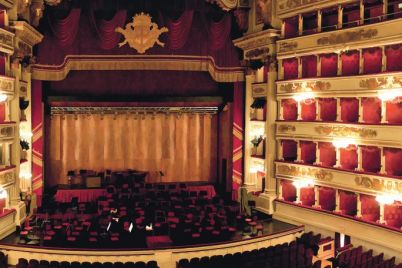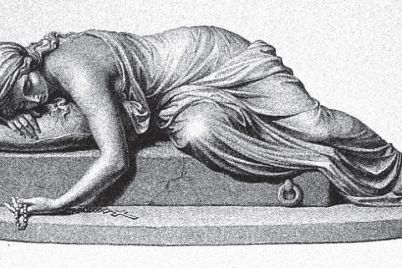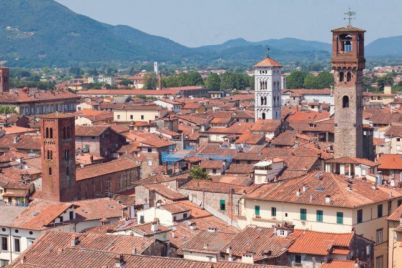Italian popular music of the 1950s was dominated by the themes of departure, separation, nostalgia, longing and return. When Italian immigrants got off ships in North or South America, they still had these songs ringing in their ears: “Terra Straniera” by Luciano Tajoli, “Vola Colomba Bianca Vola” by Nilla Pizzi, and “Binario” by Claudio Villa.
These songs also influenced Italian cinema in that decade, and later the work of Italian-Canadian writers who began to publish in the 1970s and 1980s, since they heard these songs at home on recordings and on Italian radio. These melodic songs are now coming back as CDs as Italians in Italy long for a simpler time of hope for the future. The popular rediscovery of these old songs is also an indication of audience dissatisfaction with current Italian popular music which is often an imitation of the most cacophonous American music. These songs are part of authentic Italian lyric tradition linked to opera, since many of the singers were classically trained and often sang these songs in the dramatic style of opera. A living example is Andrea Bocelli, who can sing Puccini’s “Nessun dorma,” and “O Sole Mio” on the same CD.
In July 1952, I disembarked with my family at Pier 21 in Halifax. We had sailed from Genova on the Italian ocean liner SS Conte Biancamano. The crossing took 18 days: Genova, Naples, Palermo, Gibraltar, Halifax. This transplantation changed the lives of all the people in my family: both those who left and those who stayed behind in Italy.
On board the Conte Biancamano, they played Italian music. Nilla Pizzi, the queen of Italian musica leggera brought out the very popular son “Vola Colomba Bianca Vola” which had won the San Remo Festival prize for best song in 1952. The singer addresses this love song to a distant lover and asks the white dove to fly to her. Many of the men departing from Italy and leaving their wives or girlfriends behind could identify with the lyrics of this song. Another song of this period was “Binario” sung by Claudio Villa. The singer laments the departure of the lover who is leaving by train. Trains often took men to ports where the transatlantic ocean liners docked. Other Italian ocean liners of the 1950s were the MS Vulcania, the MS Saturnia, the SS Conte Grande, the MS Giulio Cesare, and the MS Augustus. Some of these ships made as many as seven ocean crossings a year carrying over 1,600 passengers on each voyage.
In 1952 the film Terra Straniera, which tells the story of immigrants working in a mine, was released. In 1953 Luciano Tajoli sang the sad words, “Terra straniera quanta malinconia,” capturing the nostalgia of Italians abroad. Also in 1953, Nilla Pizzi sang “Campanaro” at the San Remo Music Festival. In the song the old church bells ring out for the departure of the immigrants. In the lyrics the singer names many specific villages and towns. Other songs make references to the emigrante and the desire to return home. One such song is “Porta un Bacione a Firenze” first sung by Narcisio Parigi in 1957. Italian tenors like Claudio Villa sang these songs with operatic drama and long, long notes in the finale.
These songs reflected the social reality across Italy, with the departure of thousands of people from both north and south. This exodus was having a profound effect on Italian society. The Italian expression “parte anche chi rimane” suggests that even those who remained in Italy experienced a departure. The immigrant sentiments of reluctant embarkation, regret, nostalgia, and longing to return became so dominant that they influenced the interpretation of songs that were not about immigration at all. An example is how the 1935 song “Non ti scordar” di me by Carlo Buti, about a lover wishing to be remembered, was turned into a immigrant song about a lover who is emigrating abroad. Another was the very famous 1940 song “Mamma,” sung by Ferruccio Tagliavini and later Claudio Villa, which was re-interpreted into an immigrant song about a son who longs to return home to his old mother: “Mamma, son tanto felice perché ritorno da te.”
A strange example of this re-reading of a song is “Arrivederci Roma.” It first appeared in the 1955 film by that name and was sung by Mario Lanza. The song is about tourists in Rome who throw coins into the Trevi Fountain and make a wish to return to the eternal city. Because of the strong nostalgia in the lyrics, it became a song for Italian immigrants and travellers longing to return to Italy; in the song Rome symbolized all of Italy.
Another song that was given an immigrant re-reading was “Al di là,” Luciano Tajoli’s most famous song from 1961. It is a love song to a woman who is far away; it is full of superlatives about the lover’s devotion. These lines about the ocean give it that immigrant aura: “Al di là del mare più profondo, ci sei tu. / Al di là dei limiti del mondo, ci sei tu.”
Immigration was given a positive treatment in the 1957 song “Casetta in Canadà,” first sung by Carla Boni. Here, the returning Italian immigrant is admired by Italian girls because he has a “little house in Canada.” He has achieved success and has come back, perhaps to find a wife and take her to Canada. In 1956 the film Canto dell’emigrante was released, wherein Luciano Tajoli sings the very sentimental song by the same title.
In 1958 Domenico Modugno wrote and sang his most famous song, “Nel blu dipinto di blu,” which is better known in North America as “Volare.” It is a love ballad in which the singer compares his feelings for his lover to the sensation of flying, volare. This too became, in part, an immigrant song because it marks the beginning of air travel for Italian immigrants. The first passenger planes had piston engines and had to stop to refuel in London and Newfoundland. In August 1959, non-stop air travel began between London and New York with Boeing 707 jets. By 1960, Alitalia began jet flight in Europe and later on international flights.
The song “Volare” became very popular in the 1960s, as more and more people were flying between Europe and North America. The beginning of air travel marked the end of ocean liners. The ship that brought me to Canada, the Conte Biancamano, was decommissioned in 1961. The Vulcania was sold in 1965, the Saturnia was scrapped in 1965, the Conte Grande was scrapped in 1961, and the Giulio Cesare was scrapped in 1973. In one short decade we moved from train and ship travel with “Binario” in 1951 to “Volare” in 1958 and the beginning of mass air travel.
– – –
Growing up in Canada in the 1950s and 1960s as students, who later became writers, we heard this music and the sentimental lyrics of nostalgia for Italy. Italian-Canadian poet Pier Giorgio Di Cicco’s early poetry has many references, Italian phrases and titles, which demonstrate the influence of Italian immigrant music. In one poem which he calls “Immigrant Music,” he writes: “I play the tunes my father used to know, my father used to / sing in the attic of his loneliest thought, / thinking up a street in Italy, or carrying a daughter / into an autumn park; you know these songs over and over / the songs of sun…”
In her immigrant play, Caterina Edwards uses the title, Terra Straniera (1986), which is a reference to the song from 1953. But when the play was published in 1990 she changed the title to Homeground. In the play some of the characters sing lines from the immigrant songs that I have mentioned.
In her collection of narrative poems, Mimosa and Other Poems, Mary di Michele has a scene in which the immigrant father, Vito, listens to Italian music: “Sentimental music is being sucked up / from the stereo system in the basement / like a sweet gaseous pop / through a straw. / He listens to an Italian tenor sing Mimosa / and savours his banishment / with a ginger nostalgia / ginger ale fizzing in a glass by his side.” With the critical eye of the Canadian-educated daughter, the scene captures the lazy sentimentality of this music of nostalgia. Mary di Michele returns to Italian music in her novel Tenor of Love (2004), about the famous tenor Caruso who sang at the Metropolitan Opera in New York and became the first recording superstar and millionaire. In his 25-year career he made 290 commercial recordings, many of which are still available today. With easy access to his many records, he was a popular singer who was listened to by many lonely Italian immigrants in the 1950s and 1960s. Mary di Michele tells us that one of the inspirations for her novel, Tenor of Love, was the popular 1986 song “Caruso” by Lucio Dalla which has the familiar refrain: “Te voglio bene assai, ma tanto, tanto bene sai.” This song, too, has become an immigrant song with the image of Enrico Caruso dying in Italy and the lines: “Vide le luci in mezzo al mare / penso alle notti là in America.”
The most significant novel about an ocean crossing is Nino Ricci’s Lives of the Saints (1990), in which Vittorio’s mother dies onboard ship while giving birth to his sister. In the novel, Vittorio and his mother Cristina sail on the Saturnia from Naples in 1958. They make friends onboard. They are invited to one dinner with the ship’s captain, a dinner which is ended by a dramatic storm at sea. The captain receives a message from another Italian ship, the Vulcania, alerting him about the coming storm. During the storm Cristina gives birth to her baby daughter, but the mother later dies in her sleep. The image of the blind
Andrea Bocelli comes to mind as he sings “Con Te Partirò,” which echoes the voice of the immigrant with these lines: “Con te partirò / su navi per mari che, io lo so, / no, no non esistono più / con te io li rivivrò.”
Bocelli first sang this song in the 1995 San Remo Festival. The song, written by Lucio Quarantotto with music by Francesco Sartori, is a love song. But we Italians in Canada read it as a song of “viaggio,” if not migration, to new “paesi che non ho mai veduto e vissuto con te.”
To me the influence of this music is an indication of the powerful effects of immigration on our lives, our culture and our writing even now, in the twenty-first century.




